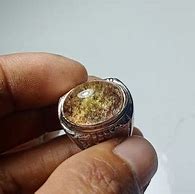
Penang Char Koay Teow
What makes a good plate of char koay teow? Is it the smokey aroma and flavour of the noodles? Is it the juicy, fresh ingredients? Or is it simply the savoury sauces that bring the dish to life? Whatever your answer, one thing’s for sure: Penang is where you’ll find some of the tastiest char koay teow in Malaysia.
In fact, the popular Malaysian destination has so many char koay teow stalls to choose from that you might not be able to settle on which one to try when you first visit. However, don’t fret because here’s a list of stalls that sell the best char koay teow in Penang, certified by locals:
Ah Shen Presgrave Street Duck Egg Char Koay Teow
Speaking of duck egg char koay teow, one of the most popular spots for this upgraded version of char koay teow on Penang Island is a humble shoplot on Presgrave Street. Manned by local foodie Ah Shen, the stall sells smoky char koay teow (stir-fried over a charcoal fire for extra wok hei) topped with a sunny side up duck egg. The duck egg elevates the entire dish, giving it a richer, creamier flavour that goes well with the springy rice noodles and crunchy bean sprouts. Don’t forget the spicy sambal too!
Opening Hours: Daily 3–10pm
67b, Lebuh Presgrave, 10300 George Town, Pulau Pinang
Chulia Street Char Keow Teow
Chulia Street is arguably THE place to be in Penang at night, thanks to its array of bars and eateries. It’s not surprising then, that it is here where you’ll also find arguably the best char koay teow in Penang during the night! This humble stall, located smack dab in the heart of Penang’s nightlife zone always attracts a crowd. If you’re craving a taste of this popular char koay teow, make sure to come with a good appetite and plenty of patience!
Opening Hours: Daily 6–10pm
Chulia Street, Georgetown, 10200 George Town, Penang
Char koay teow is conventionally eaten during lunch or dinner. However, in Penang, you can also eat it for breakfast. Tiger Char Koay Teow offers exactly that, opening early in the morning and offering customers mouthwatering plates of savoury char koay teow from as early as 8am! Expect to find your char koay teow piled high with juicy prawns, cockles, and either chicken or duck eggs. For an extra kick to go with the wok hei (smokey aroma) of the noodles, ask for extra chili in your noodles. You won’t regret it!
Opening Hours: Daily 8am–2pm
179, Lebuh Carnarvon, George Town, 10450 George Town, Pulau Pinang
Best Char Koay Teow In Penang
Tiger Char Koay Teow
Image Credit: Tiger Char Koay Teow
Nothing special about Tiger Char Koay Teow, except the good taste and fatally Wok Hei aroma! In addition, Tiger Char Kway Teow is serious about ingredients. The freshest prawn ever and bold flavors are something foodies always love! Moreover, look at that golden color with red hues in between, of course, the level of “Char” is just right!
Image Credit: Tiger Char Koay Teow
Furthermore, the setting in Ping Hooi Kopitiam is simply plain. However, it’s still airy and giving off a local vibe along with chatters! In addition, don’t ever hesitate to try out the seafood version of Char Kway Teow! With scallops and abalone, the briny flavor is truly a hit!
Additional Information: Address: 179, Lebuh Carnarvon, George Town, 10450 George Town, Pulau Pinang. Operation Hours: 07:30 am to 02:00 pm (Open Daily) Contact Number: +60 16-458 0926
Char kuey teow in Penang
One simply cannot spell Penang without char kuey teow – or as the locals spell it, char koay teow. Intellectuals will argue that we can, technically, but true Malaysian foodies know that the local dish is such a state pride that it’s almost absurd not to mention the noodle dish when we talk about Penang.
There may be civil debates about whether the best char kuey teow is truly from Penang, but none can deny that the island is where you’ll find a formidable amount of char kuey teow that are wok hei-ed beyond perfection. And we’re not here to challenge this notion.
We’re here to bring to you this review of 6 char koay teow spots in George Town, Penang, that will leave you giddy, grease-filled, and gladly full. As Penang’s top culinary triumph, it’ll be hard to say no to plates of sexy wok-fried goodness – practically art-woks cooked up by Penang chefs, if you ask us.
Siam Road Charcoal Char Koay Teow
You know the advice of visiting a famous eatery: come with plenty of tummy space, and also with plenty of patience.
The pioneer of charcoal-fueled char koay teow which once operated by the roadside and now a Michelin-approved stall, Siam Road Char Koay Teow is one of the oldest CKT hawkers in Penang, and arguably one of the very best.
We arrived half an hour before its opening time, and was already met with a short queue which grew exponentially when the hawkers arrived. The queuing and ordering system was rather seamless with the auntie’s sharp attentiveness and clear instructions for customers to keep things in order.
We all know of the elderly uncle, affectionately known as Uncle Tan, and the king behind Siam Road’s treasured plates of charred goodness. Since his retirement, his son has taken over the helming of the store and stove.
Melting from the heat in line wasn’t half as torturous as it would have been, if not for the uncle’s artisan display of frying the dish.
Unostentatious and laser-focused in his craft, he cooked in such a habitual efficiency, it was an awe to witness. The oil and pork lard triggers the sizzling, and in goes the rest of the ingredients in quick succession, interspersed with swishes of spatula and the addition of hot coals beneath the wok.
Rest assured that Siam Road’s char koay teow remains just as divine. A small-sized plate priced at RM9 is simple in its conception, with chilli-coated rice noodles interlacing thickets of eggs, decently plump and seared prawns, sweet lap cheong or Chinese sausages that have been singed in all the right corners, and fresh cockles that melts in your mouth.
The best part about this dish is its smoky wok hei aroma that is evident all the way till your plate is wiped clean, layered with the flavour of the pork lard which makes the dish sinfully moreish.
Our only gripe is for them to limit the number of orders per person – having a customer right at the front of the queue who smugly ordered 16 packets of CKT was not fun for the those at the back of the queue.
Address: 82, Jalan Siam, George Town, 10400 George Town, Penang Opening hours: Tue – Sat 12pm-6.30pm (Closed on Mondays & Sundays)
Ah Leng Char Koay Teow
Image Credit: Ah Leng Char Koay Teow
A visit to the Ah Leng Char Kway Teow Penang shows patrons a flavorful taste they can’t miss out on! It nestles in Tong Hooi Restaurant, not fancy, but giving off friendly vibes for good! Well, the food aroma of deep-fried pork lard speaks for itself once stepping near the stall, undoubtedly!
Image Credit: Ah Leng Char Koay Teow
Moreover, check out the portion guys, the chef just never pauses to add more prawns! Savor the stir fried rice noodles, it’s perfectly seasoned and wetter compared to others! Furthermore, foodies like the duck egg version, as it tastes extra richer and creamier. Hence, forget about the calories and tuck in more Char Koay Teow in Penang as you like!
Additional Information: Address: 343, Jalan Dato Keramat, George Town, 10150 George Town, Pulau Pinang. Operation Hours: 10:30 am to 04:00 pm (Closed on Wednesdays & Thursdays) Contact Number: +60 12-498 3962 Website: Penang Ah Leng Char Koay Teow槟城驰名亚龙炒粿条
New Lane Street Char Koay Teow
Photo: @thehastytasty (Instagram)
Last but not least, New Lane Street Char Koay Teow is another place for must-eat CKT! The traditional charcoal CKT here is best enjoyed at night in the company of your loved ones. Kick back, relax and let the lively atmosphere around you at this hawker centre transport you on a vibrant culinary journey.
Photo: @christopherhwwong (Instagram)
New Lane Street Char Koay Teow
Address: Lorong Baru, 10450 George Town, Pulau Pinang
Operating Hours: Thursday to Tuesday (4 – 11 pm), Closed on Wednesdays
History and etymology
The dish was often sold by fishermen, farmers and cockle-gatherers who doubled as char kway teow hawkers in the evening to supplement their income.[7] The high fat content and low cost of the dish made it attractive to these people as it was a cheap source of energy and nutrients.[8]
The term "char kway teow" is a transliteration of the Chinese characters 炒粿條 (in simplified Chinese 炒粿条). The dish's name is Hokkien (chhá-kóe-tiâu?), but the dish may have its roots in Chaozhou in China's Guangdong province and is mostly associated with the Teochew.[2] The word kóe-tiâu (literally meaning "ricecake strips") generally refers to flat rice noodles, which are the usual ingredient in Singapore and West Malaysia. There is no fixed way of spelling chhá-kóe-tiâu, and many variants can be found: examples include "char kueh teow", "char kuey teow", "char koay teow", "char kueh tiao", "char kuay tiaw", "char kueh tiaw" and so on.[9]
The dish is sometimes called kwetiau goreng or kuetiau goreng in Malay, which conveys the same meaning.[10][9] In March 2021, Dewan Bahasa and Pustaka (DBP), Malaysia's authority on standardised Malay, formally declared that the proper spelling of flat rice noodles in Malaysian Malay is kuetiau.[9] In Indonesia, the dish is generally called kwetiau goreng, although some regions use the term mitiau instead of kwetiau. Conversely, kuetiau is rarely used in Singapore, with kway teow being used instead.
Owing to the dish's popularity and spread to Cantonese-speaking areas, the term "char kway teow" has been corrupted into "炒貴刁" (Cantonese Yale: cháau gwai dīu; pinyin: cháo guì diāo) when presented in the aforementioned areas. The term "貴刁" has no real meaning, but its pronunciation in Cantonese and Mandarin is similar to "粿條" in Min Nan.
"Gourmet" versions of char kway teow, in which the dish may be prepared with more seafood, with crab meat[11] and with duck eggs, may be found in major Malaysian cities like Ipoh and Penang.[12] In Penang, char kway teow is commonly served on a piece of banana leaf on a plate, which is intended to enhance the aroma of the dish.[13]
Char kway teow is a popular, inexpensive dish usually eaten for breakfast and sold at food stalls in Singapore.[14] Blood cockles and prawns are standard fare in typical hawker preparations, while more expensive or luxurious versions incorporate cuttlefish, squid, and lobster meat. Singaporean style char kway teow mixes yellow wheat noodles with flat rice noodles. Some cooks prepare more health-conscious versions with extra vegetables and less oil.[6]
Char kway teow prepared by Muslims in Malaysia and Singapore excludes lard and pork products, and may incorporate alternative ingredients like beef or chicken.[5][10] Some versions by Malay cooks may emphasise the use of kerang (Malay for cockles) as a key ingredient, and it may be prepared with or without gravy.[15][16]
Many Southeast Asian restaurants in Hong Kong offer char kway teow as an overseas specialty, although it is of Southeast Asian Chinese origin. The char kway teow offered in Chinese restaurants which serve Hong Kong-style Cantonese cuisine is an entirely different dish: stir-fried Chinese-style flat rice noodles with prawns, char siu, onions, and bean sprouts, seasoned with curry powder which renders it bright yellow in colour.[17] In some places this is known as Fried "Good Dale", a transliteration of the characters "炒貴刁".[18][17]
A large serving of char kway teow
Singaporean-style char kway teow, cooked with a mixture of yellow wheat noodles and flat rice noodles
Penang-style char kway teow, here served on a piece of banana leaf
Small plates of char kway teow served at a Singapore
Penang Char Kway Teow là món ăn nổi tiếng của thành phố Penang, Malaysia, nhưng thực khách vẫn có thể tìm thấy món ăn này tại các khu ẩm thực người Hoa ở nhiều nơi khác. Char Kway Teow được làm từ hủ tiếu gạo bản cán dẹt (tương tự như sợi phở) xào lên cùng với nước sốt cay, trứng, giá hẹ, lạp xưởng, chả cá và thêm hải sản như nghêu, sò, tôm... tùy thích.
Char Kway Teow có nhiều nét tương đồng với món phở xào của Việt Nam, nhưng bằng cách chế biến cũng như thêm vào những gia vị riêng đã tạo nên món hủ tiếu xào đặc trưng của Malaysia. Đây là một trong những món dễ ăn nhất và có phần gần gũi với khẩu vị người Việt.
Khi chế biến món ăn này, người đầu bếp sẽ phải chỉnh mức nhiệt lên cao nhất và xào hủ tiếu trong chảo sâu lòng với gia vị gồm xì dầu, sốt ớt cay đặc trưng của Char Kway Teow. Mỗi nơi bán Char Kway Teow sẽ có một cách chế biến sốt ớt riêng, nhưng điểm chung là đều có vị cay the đặc trưng. Thậm chí, khi hòa quyện cùng dầu mỡ thì món ăn này lại thêm phần cay gấp bội. Sự hòa quyện của nhiều loại hương vị này đã tạo nên một món ăn đậm đà khó quên của ẩm thực Malaysia.
Do xào trên lửa to nên công đoạn chế biến món Char Kway Teow cũng diễn ra rất nhanh. Đặc biệt, người đầu bếp còn phải tập trung để món ăn xào được đều tay, thấm đều gia vị và không bị cháy.
Được mệnh danh là “Vua Char Kway Teow” của Penang, người đàn ông lớn tuổi này với chiếc xe đẩy nằm góc đường Siam và đường Anson đã làm xao xuyến biết bao tín đồ của món ăn này. Không chỉ người dân địa phương mà cả khách du lịch cũng đều tò mò tìm đến thưởng thức, theo misstamchiak
Char Kway Teow ngon nhất là thưởng thức nóng ngay khi vừa xào xong. Nhờ không cho nhiều gia vị trong quá trình chế biến nên thấy rõ được vị mặn mà của xì dầu, vị ngọt quyện của tôm, giá hòa quyện cùng sự thơm dậy mùi của trứng, hành hoa, và tất nhiên sẽ không thể thiếu vị cay nồng đặc trưng của sốt ớt.
Gần đây, món ăn đã được đổi mới theo hướng có lợi cho sức khỏe hơn khi những đầu bếp cho thêm nhiều rau xanh và giảm bớt dầu mỡ. Trước đây, người ta thường dùng mỡ heo và những miếng tép mỡ giòn tan để xào với mì gạo tạo ra một hương vị béo ngậy đặc trưng, nhưng ngày nay họ thay thế mỡ heo bằng dầu ăn hoặc bơ thực vật. Điều này không chỉ làm cho món ăn tốt hơn cho sức khỏe mà rau xanh và giá còn mang đến vị tươi mát và giòn, làm tăng chất lượng cho món ăn.
Các thực phẩm dùng để chế biến cho món ăn này mọi người có thể đặt mua trên các ứng dụng đi chợ hộ trực tuyến như ShoppeFood, Grab, Gojek hoặc tùy vào nguyên liệu có sẵn trong nhà mà thêm hay bớt tùy thích.
Mùi thơm tỏa ra từ món ăn sẽ kích thích tất cả các giác quan của thực khách, từ thị giác đến khứu giác và thính giác, và tất cả điều đó có thể diễn ra thậm chí trước khi thực khách được thực sự nếm món ăn này. Hủ tiếu xào cay Char Kway Teow chắc chắn là một món ăn thơm ngon khiến cho ai một lần thưởng thức qua cũng phải ngây ngất và mê mẩn.























